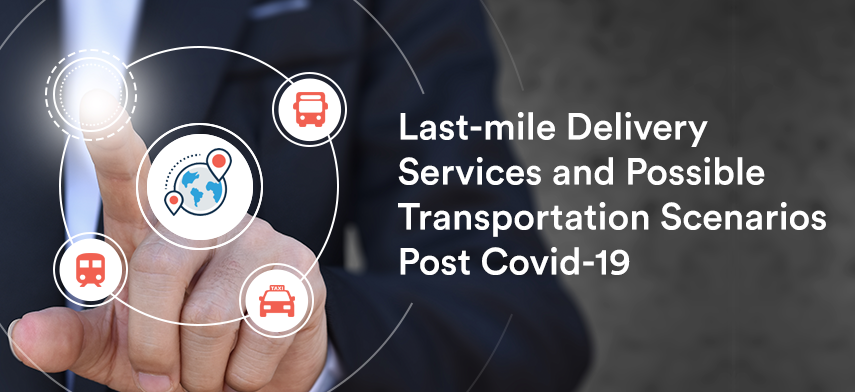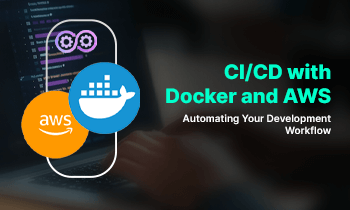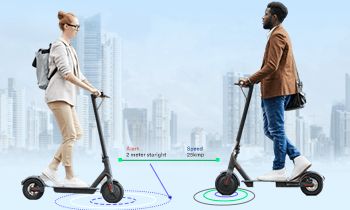We cannot ignore the impact of COVID-19 on supply chain industries across the world. The travel and social distancing measures have led to the closure of non-essential shops, restaurants, and almost every place you think. In most countries, the increase in demand for groceries and physical shopping reduction has been quite notable. The rise of e-commerce has seen a massive demand for last-mile delivery services.

On the other hand, the pressure on organizations has seen a shift from moving citizens to keeping up a core transportation system that is operational with a basic workforce. There is no doubt in the fact that it is important for freight workers to keep moving. But due to the sudden change, organizations felt the urge to make changes in the system and ensure that the transportation network shall be ready to return to normal operations.
Emerging Mobility Ecosystem and its Essential Features
It is believed that autonomous driving cars are now creating an impact, and the industry is getting active. While the mobility players are focusing on responding to COVID-19 in 2020, they shall continue to invest in Autonomous, Connected, Electric, and Shared vehicles (ACES). Let’s understand it in a better manner as follows:
Technology is The Future of Mobility
‘Driverless cars’ are becoming more prominent and functional. If the companies fund these innovations, it has always been challenging as these projects are high cost, and the pandemic has worsened the issue. This happened due to the traditional OEMs that have undertaken cost-cutting initiatives and cash-preserving measures, leaving little room for technological investments. The pace of the change of technology keeps continuing and will accelerate in all the areas that include last-mile delivery services, urban transport, and autonomous driving.
The Rising Demands
Today, it is evident that there is a shift in the way consumers view mobility. The trend is particularly witnessed within the areas, especially the urban parts, where people have more significant mobility choices. According to KPMG’s Global Automotive Executive Survey 2019, the opinion of decreasing ownership of vehicles is also shared by 39% of surveyed customers. The survey also showed that about 50 percent of the car owners do not want to own a personal vehicle by 2025. This shift can be partly attributed to the demand for ‘Mobility as a Service (MaaS)’ as an excellent alternative to ownership. Companies are also modernizing the legacy applications to make it easier for consumers to adapt to this shift.
The Smart Mobility Marketplace
The automotive players across the marketplace including private, public transport, and transportation of goods have experienced strategic shifts in the sector. Across the global industries, CO2 regulations have tightened, and are forced to adopt the novel technologies faster than anticipated. In the light of these recent transformations, on-demand mobility services need a fresher perspective to meet the rising demands. It has become necessary for businesses to change the business model and even redefine their delivery workflows.
The Purchasing Power
There is no doubt that the global auto industry is experiencing a decrease in worldwide sales during and after COVID-19. According to the reports, 2020 estimated about 59.5 million global auto sales, which is a 20% decline year on year. The experts predicted that the car sales would reach 80 million, but due to the unexpected decline during the COVID-19, it went down and impacted the purchasing power. People are getting diverted towards purchasing e-scooters and bikes, especially in urban areas.
The Combination of Pandemic and Smart Mobility Economy
As we have gone through the essential features of the emerging mobility ecosystem, let’s understand deeply the combination of pandemic and smart mobility economy with the below:
1 The COVID-19 Impact
The long-term and sustained influence on social distancing has changed mobility in the macroeconomic surroundings, consumer behavior, technology, and regulatory trends. These pandemic-related trends differ by region and mobility players’ responses. COVID-19 has also turned the essential smart mobility economy upside down, and the implications of this crisis shall remain for a longer time, even after the condition is under control.
2 The Economic Dropdown
COVID-19 has undoubtedly taken over the globe in just a few months while putting lives and businesses in jeopardy. Smart mobility is not left behind, and the automobile industry is also facing many challenges related to last-mile delivery services. Disrupted travels, mass layoffs, public-transit ridership dropped down to 70 to 90 percent in the world’s major cities. The economic dropdown made it necessary for the automobile sector to develop new plans and functions to survive further while battling COVID -19 and the economy at the same time.
3 The Rising Transportation Scenarios
The crisis has affected almost all transport types, be it public or private, trains, busses, and planes. The global road transport activity reported a nearly 50% decrease by the end of March 2020. In many countries, strict lockdown imposed led to an almost 95% decrease in subway travel in London.

Defining the Possible Transportation Scenarios
Acknowledging the above combination, here are four possible transportation scenarios that may transform the future of mobility ecosystem.
The Shift in Mobility Trends and MaaS
The shift in mobility trends and MaaS happened due to the rising challenges across the smart mobility industry and transport sector. The MaaS is one of the key trends, which is expected to pick up the pace post-COVID-19. The only difference after the pandemic can be the traffic management system, which plays a crucial and key role in transportations. TSMO, also called The Traffic Management and Transportation Systems Management and Operations are likely to integrate with the MaaS in the future.
The passengers usually prefer mobility based on mainly three features: convenience, experience, and affordability. Even after the pandemic, keeping all these essential factors intact, safety will now be the fourth on the list. The passengers would expect any mobility type to be infection-free and as safe as possible.
Public-Private Partnerships
Urban transportation has led to the swelling demand for high quality and low-cost ridership in public-transit systems. Conditions like these have put up a considerable amount of stress on the entrepreneurs. New mobility services like capitalizing on advanced technologies like cashless payments, mobile communications, data collection, remote monitoring, energy storage, analytics, and artificial intelligence have emerged to offer people an array of transport choices than before. The services include shared mobility, product innovation, consumer experience, and data-driven decision making.
Apart from private transportation services, shared mobility service also accounts for more than half of the new mobility start-ups worldwide. One example of these is the e-hailed motorcycle-taxi services that have proven to be popular around Africa. Also, other parts of the world are now slowly embracing on-demand shuttle services. Many product-innovation companies in North America are now focusing mainly on electric vehicles and self-driving vehicles.
Electric Vehicles (EVs)
The consumer demand for elective vehicles worldwide has seen stagnation during COVID-19 compared to other vehicles. Even though the market has declined in China and Europe, a rise in market share has been noticed. The EV manufacturers that offer online sales have experienced high demand in sales since the lockdown measures control the spread of COVID-19. For instance, a huge shift was seen when Tesla released an online-only sales model, increasing sales in March 2020.
In 2019, the spread of electric mobility seemed a bit poised to reach a destination. But now, with more than two million electric vehicles being sold out, electric vehicle adoption is slowly rising. The negative predictions which were made about electric vehicles earlier have now become pointless. So if businesses want to create more accurate forward-looking perspectives, they need to examine the emerging development that will shape the market over the coming years.
Last-Mile Delivery Workflows
With the less accessibility of the physical world, online shopping’s convenience made it comfortable for the customers to expect an on-demand delivery for anything and everything and whenever they need it. Last-mile delivery services are one such example that became effective right after the breakout of the pandemic. As per the World Economic Forums and a report submitted by IBM, it was projected that the growth in e-commerce was noticed by about 20%.
Traditionally big stores like Target and Walmart saw their business go double in the first half of the year, while online stores like Amazon saw a growth of about 40% in sales. The segment of new consumers shall considerably fuel the growth. The rise in essential to non-essential, groceries has already pushed many firms to choose an online mode to operate.
Conclusion
Online shopping, on-demand delivery, and remote working will keep on growing. The pandemic has in some ways made these even more mainstream as an expectation from the end consumers. If you think holistically, then shared mobility and last-mile delivery services can enhance the delivery business’s operational efficiency.
There are also benefits included from the support of electric vehicles. Improving the finances on both ends and providing an affordable delivery channel to smaller and local businesses can be beneficial. The future of mobility lies within consumers’ hands, and they are the reason behind ever-changing demands. But it is also true that shared mobility can broadly impact sustainable cities even after its current use cases in the last-mile delivery workflows.

Author's Bio

Nitin Lahoti is the Co-Founder and Director at Mobisoft Infotech. He has 15 years of experience in Design, Business Development and Startups. His expertise is in Product Ideation, UX/UI design, Startup consulting and mentoring. He prefers business readings and loves traveling.


